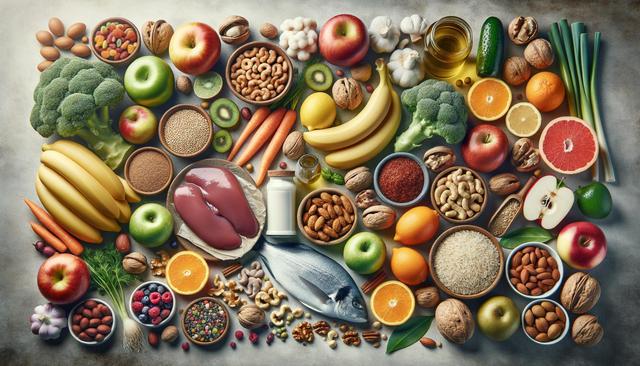
Useful Remedies That May Help Detox a Fatty Liver Naturally
Understanding Fatty Liver and Its Dietary Impact
A fatty liver, also known as hepatic steatosis, occurs when too much fat builds up in liver cells. This condition can be influenced by lifestyle choices, especially diet. While it can be asymptomatic in early stages, over time, fatty liver may lead to inflammation and liver damage if not properly managed. Adopting the Best Diet for Fatty Liver Reversal is one of the most effective strategies to support liver health. Foods rich in antioxidants, fiber, and healthy fats can help reduce liver fat, improve function, and even reverse early stages of the condition.
When considering How to Cleanse Fatty Liver naturally, it’s useful to focus on nutrient-dense, whole foods. Avoiding processed sugars, refined carbohydrates, and saturated fats is essential. Instead, choosing foods that support liver detoxification and reduce inflammation plays a major role in long-term liver health. A consistent and balanced nutritional approach can serve as a foundation for managing and potentially reversing fatty liver symptoms.
Highly Regarded Foods That Support Liver Health
Certain foods are commonly included in the Best Foods for Fatty Liver due to their natural compounds and nutritional content. These foods are known to contribute to lower liver fat levels and support overall digestive health. Incorporating these into daily meals can be a simple yet powerful step toward better liver function. Some of the most well-regarded options include:
- Leafy greens like spinach and kale, which are high in antioxidants and fiber
- Fatty fish such as salmon or sardines, offering omega-3 fatty acids that help reduce liver fat
- Avocados, which contain healthy fats and anti-inflammatory properties
- Green tea, known for its catechins that may aid in fat metabolism
- Garlic, which may activate liver enzymes and assist in flushing out toxins
Including these foods in a balanced way, alongside reduced intake of alcohol and sugar, creates a supportive environment for liver recovery. Over time, this contributes to a more effective and sustainable dietary plan tailored to liver wellness.
Natural Ingredients That May Aid Liver Detoxification
Several natural ingredients have traditionally been used to support liver detox processes. While scientific evidence varies, these ingredients are often included in wellness routines aimed at liver care. When thinking about How to Cleanse Fatty Liver through natural means, consider the following commonly used remedies:
- Turmeric: Contains curcumin, which has anti-inflammatory properties
- Milk thistle: Known for its potential to protect liver cells and promote regeneration
- Dandelion root: Used in traditional medicine to stimulate bile production
- Apple cider vinegar: Thought to support metabolism and digestion
- Lemon water: Often consumed to encourage hydration and toxin removal
It’s important to remember that these are supportive aids and should be used in conjunction with a nutrient-rich diet. Consulting a healthcare provider before starting any new supplement or herb is advisable, especially for individuals with pre-existing conditions or those on medication.
Helpful Habits for Long-Term Liver Wellness
Beyond food and supplements, lifestyle habits play a crucial role in managing fatty liver. Establishing a routine that includes regular physical activity, adequate sleep, and stress management can significantly impact liver health. These habits complement the Best Diet for Fatty Liver Reversal and enhance the body’s natural detox capabilities.
Some key habits that support liver wellness include:
- Engaging in moderate exercise at least 4–5 days a week
- Maintaining a healthy weight to reduce liver fat accumulation
- Drinking plenty of water to aid in digestion and toxin elimination
- Limiting alcohol intake, as it can contribute to liver damage
- Practicing mindful eating to improve digestion and nutrient absorption
Developing these habits gradually can make them easier to maintain long term. Together, they create a strong foundation for liver health and can support the effectiveness of dietary changes and natural remedies.
Creating a Balanced Meal Plan for Liver Health
To put all these elements into practice, it helps to follow a structured meal plan that includes the Best Foods for Fatty Liver and aligns with the Best Diet for Fatty Liver Reversal. A balanced plan typically involves three well-portioned meals per day, with healthy snacks as needed to maintain energy and prevent overeating.
A sample daily meal outline might include:
- Breakfast: Oatmeal with berries and a sprinkle of chia seeds
- Lunch: Grilled salmon with quinoa and steamed spinach
- Snack: A handful of walnuts and a green tea
- Dinner: Lentil soup with a side of mixed greens and avocado
Meal planning can reduce the temptation to rely on processed foods and ensures consistent nutrient intake. Over time, this structured approach supports liver regeneration and can be a practical method for those exploring How to Cleanse Fatty Liver through everyday choices.
Conclusion: Supporting Liver Health Through Everyday Choices
Managing fatty liver through natural means involves a combination of nutrient-dense foods, beneficial habits, and selected natural ingredients. While there’s no quick fix, consistent effort and informed choices can yield meaningful results. By focusing on the Best Foods for Fatty Liver and building a lifestyle that promotes overall wellness, individuals can take proactive steps toward liver health. It’s always recommended to work alongside a healthcare provider to tailor these strategies to personal needs, ensuring safety and effectiveness throughout the journey.


